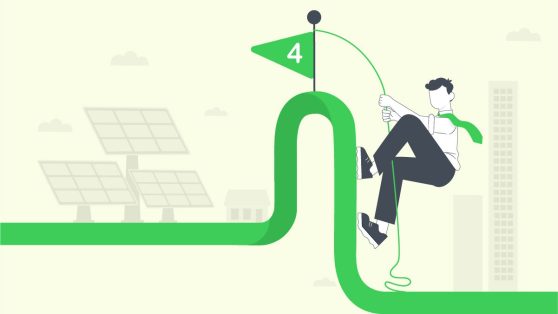Make no mistake: energy efficiency is top of mind for even the most discerning homebuyer. Since the pandemic began, home energy usage has increased an average of 20 percent, sending energy bills through the roof across the U.S. In California, PG&E customers pay 80 percent more for electricity than the national average. And Florida residents were just slapped with an average $4 rate hike in early May — just in time for the summer heat.
These high energy costs are why homebuilders like Providence Homes in Jacksonville, Florida, go above and beyond industry standards to construct homes that deliver nearly 50 percent energy savings over traditional constructions that are “built to code.”
Advances in insulation, air sealing, ductwork, high-performance windows, and heating and cooling systems are just a few ways that Providence Homes is raising the bar — not only for energy efficiency but also for creating healthier, more comfortable living spaces for discerning homebuyers.
However, according to Charles Roberts, vice president of operations at Providence Homes, conveying this value to potential homebuyers is no easy task. Even though his company is known for building smart, connected homes that are ENERGY STAR® Certified, he has struggled to demonstrate how this energy efficiency translates into long-term cost savings to the homebuyer.
“That’s why the Wiser Energy™ monitor was something that just jumped out to us — because it was the perfect solution,” he says. “By incorporating the Wiser Home Energy monitor, our homebuyers can easily see the cost savings in action, and the value speaks for itself.”
Giving homebuyers the power to manage energy costs
Roberts partnered with Schneider Electric™ to give Providence Homes the ability to demonstrate the potential energy savings from a connected, home ecosystem. The Wiser Energy system, part of the Square D™ Energy Center, gives homebuyers a connected “window” into their new home’s infrastructure, so they can learn what devices or appliances are consuming energy at a particular time.
For example, a homeowner may not be aware that many appliances can consume large amounts of energy when not in use, such as a forgotten game device or a plugged-in exercise bike. But when the Wiser Energy system installs in the home’s breaker panel, the homeowner can use the Square D edition of the Sense app to spot these energy inefficiencies in real-time and alert the homeowner — so they can take action to reduce their consumption.
“Over time, it can learn every device in your home to know exactly what is consuming energy at any particular time,” Roberts says.
Here’s how it works. Just minutes after installing the Wiser Energy system into the breaker panel, the unit begins measuring electricity use for each device in the house. Using machine learning, the system “identifies” every appliance’s unique electrical signature and then tracks whenever it turns on and off. Wiser Energy then processes that data into digestible information and delivers it to the homeowner so they can see where and when the most energy is consumed, down to the plug level. This allows the homeowner to make changes to reduce their energy consumption.
Think of the Wiser Energy system as a wearable fitness tracker, but for the home. What’s more, the system will grow to meet the homeowner’s needs. It detects 12 devices throughout the home in the first month, and 25–30 devices after the first 12 months.
With the Square D edition of the Sense app, Roberts can now show potential homebuyers how they can keep tabs on the new home’s electrical activity, including mobile alerts when appliances turn on or off. The Wiser Energy system effectively turns appliances into smart devices and empowers homeowners to set energy usage goals, estimate their monthly energy bills, and take proactive action to cut their energy waste. They can then track where their money goes and get the insight they need to manage their household’s budget better.
“Now, when we say we’re going to deliver energy savings, we can prove it with this monitoring system. It’s a very powerful tool for us,” Roberts says.
Selling the long-term value of smart home ecosystems
Today’s homebuilder is under tremendous pressure to provide scalable, all-in-one home ecosystems for homebuyers who want to make their homes safer, more energy-efficient, and more resilient.
For example, in California, where millions of homeowners were impacted by the 2019 Public Safety Power Shutoffs, the ability to quickly activate alternative energy sources when the lights go out could be a key selling point for a new home. As energy demands increase and energy outages become more common due to extreme climate changes — like what happened in Texas in the winter of 2021 — potential homebuyers may be more easily swayed by a new construction optimized for alternative energy sources such as solar or battery generators.
Thanks to the Wiser Energy system and the power of the Square D Energy Center, homebuilders can now demonstrate the value of new home infrastructures that easily integrate solar, battery storage, generators, and EV charging, along with the digital intelligence to activate and monitor these energy alternatives remotely.
By partnering with Schneider Electric, homebuilders like Providence Homes can now go beyond energy efficiency to build longer-lasting, more sustainable living environments for their customers. Roberts says Providence Homes is now integrating the Wiser Energy system into more than 250 new home constructions.
“We feel the trend in homebuilding is a trend moving beyond energy efficiency into sustainability, durability, and healthier homes,” Roberts says. “And we want to be known as the builder that looks out for Jacksonville homebuyers today and in the future.”
The Providence Homes success story is just the beginning of the connected home value that homebuilders can deliver to homeowners, thanks to the growing portfolio of connected home solutions from Schneider Electric.
To learn more, please visit our connected home page.



